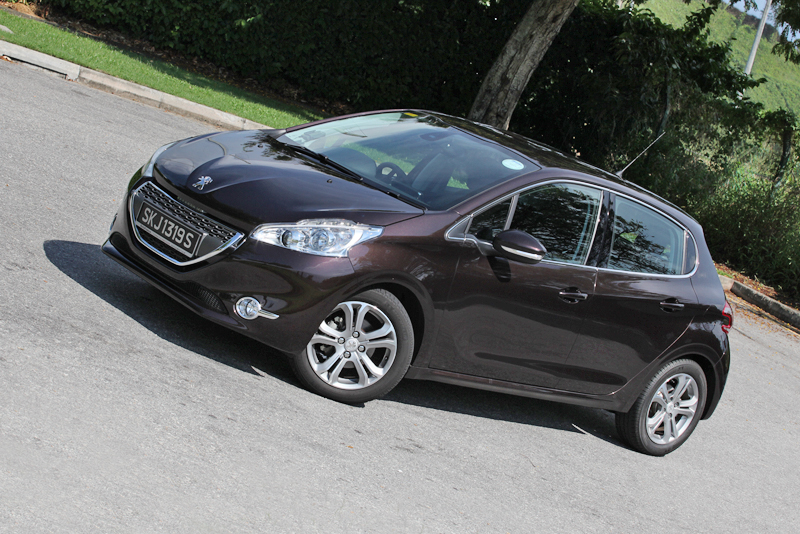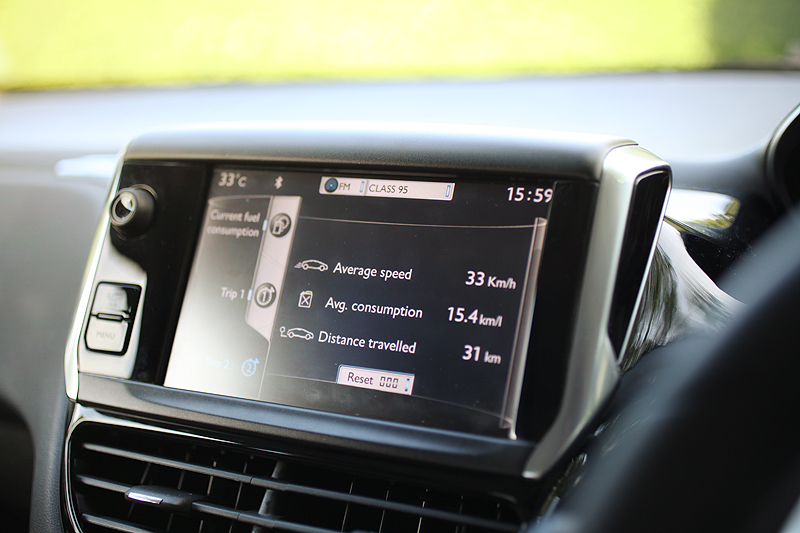… The urban one, that is. Peugeot’s latest baby has landed and, curiously for this end of the market, it’s a diesel!
Photos: Joel Tam
Since the 205 of the ‘80s, Peugeot’s best selling models have been its small ones, the 206 in particular managing to find almost 7 million homes. With its larger models losing sales to more premium competitors and its supermini sales forming the bulk of profits, Peugeot had to get the 208 right.
Overseas, the 208 is available as a three or five-door, with many different engines to choose from. For our little red dot though, AutoFrance is importing just one model, the 5dr 1.6 e-HDi – a curious decision since diesels don’t tend to offer significant economy advantages in small cars compared to larger ones, and the greater weight of the engine dulls agility.

A mismatch though it may be, the engine is still a great unit. It produces just 94bhp, which admittedly isn’t fantastic, but makes up with 230Nm of torque. That’s more pulling power than some NA 2.4-litre engines! An even bigger selling point though, is its cleanliness — just 99g/km of CO2. Perhaps this why only this engine is being imported here — it gets the maximum $20,000 CEVS rebate, a useful saving in Singapore’s problematic car market. And naturally, being a diesel, fuel consumption is excellent too; I managed just under 17km/l over 370km of not-particularly-economic driving.

The thing about engines like this is that the torque is ridiculously addictive. There’s no great shove in the back or even any excitement to be had (in fact the engine is extremely harsh and raucous above 3250rpm), but put your foot down at speed and the car just suuuuuuuuurges ahead. No muss, no fuss, just an extra 20km/h in the blink of an eye.

A good thing then, that the motor is so tractable it doesn’t usually need to downshift, because the gearbox is literally nauseating. It’s a six-speed automated manual called EGC, basically a normal manual gearbox with an electronically controlled clutch, with the option of swapping cogs yourself via column-mounted paddles. It’s great at doing its job of changing gears, just useless at doing it well. Gearshifts, particularly in the lower ratios, take an age to complete. The clutch doesn’t disengage fully, making it feel like the engine brakes between shifts, causing much bobbing of heads by occupants when the power comes back on. It’s also quite easy to confuse the gearbox, especially when navigating road humps or if you have to brake before leaving first gear - it just can't decide if it should shift up or not. You can make shifts much smoother if you lift off right when a change occurs, but why should you need to do this in a car marketed as having an automatic transmission?

At least you’ll have something nice to look at as you go about bobbing your head like an octogenarian rock star; the interior is a pretty decent place to spend time in. Ergonomics are excellent; the pedals and steering have a pleasing heft to them, and the sports seats are very comfortable and supportive — no pain or discomfort even after a long drive, and the seats’ suede inserts and large side bolsters really hold your body in place during enthusiastic driving. The dashboard has a logical, yet interesting design that’s lifted by silver and piano black trim pieces, as well as the red stitching and embossed lion on the seats. There are also a couple of nifty features not often seen even in cars from the next class up, like an auto-dimming rear view mirror, dual-zone air-conditioning and a 7-inch full colour touchscreen for the trip computer and phone/music functions.

The rest of the interior is a bit of a mixed bag though. Thanks to a recess in the dashboard on the passenger side, legroom is more than sufficient for two six-footers, but this comes at the cost of a pathetically small glovebox (it IS air-conditioned, though). There are many pockets and cubbies around the cabin for storing things, but the cupholders are useless for actually holding drinks (both a 500ml Ice Mountain bottle and 330ml drinks can wouldn’t fit). The steering wheel is tiny and nice to hold (virtual boy-racers with Logitech steering wheels will feel right at home), but shorter drivers will find difficulty in looking over the rim to see the dials. Overall you do get the feeling they put in effort to try and make an interesting and stylish cabin, but the execution does fall a little bit short.

It’s a similar story for the exterior, which thankfully does away with the gaping Joker-esque mouth that has been part of Peugeot’s corporate design language for the last few years. The front overhang has been shortened considerably and it goes a long way to making the 208 look less bloated than its predecessor, and the DRLs and chrome accents help put some bling into this otherwise demure design. It’s not suited to all tastes though, probably more of a design that will appeal more to girls (look at its little grin!) than guys. In fact, my mum loved its cute looks, while my dad reckoned its face resembled a pudgy kid with his cheeks squashed in by a small helmet. For me though, slap on some bigger rims and paint it dark grey and I’d be happy to be seen in it.

Not that the standard 16-inch rims are in themselves a bad thing. Thanks in part to them, the 208 enjoys a compliant ride that combines with that torquey engine to make a great highway cruiser. And yet despite that, the car is quite happy to be chucked into corners, the 195-section tyres hanging on gamely. The only fly in the ointment is with regards to body control, where any mid-corner bumps can unsettle the rear end.

If there’s one thing going against the 208, it’s its price. Notwithstanding the fact that modern diesels are often more expensive than their petrol siblings, the current market conditions in Singapore mean the market for small cars has pretty much evaporated. Kudos to Peugeot for trying, though. Now where’s that 208 GTi?




